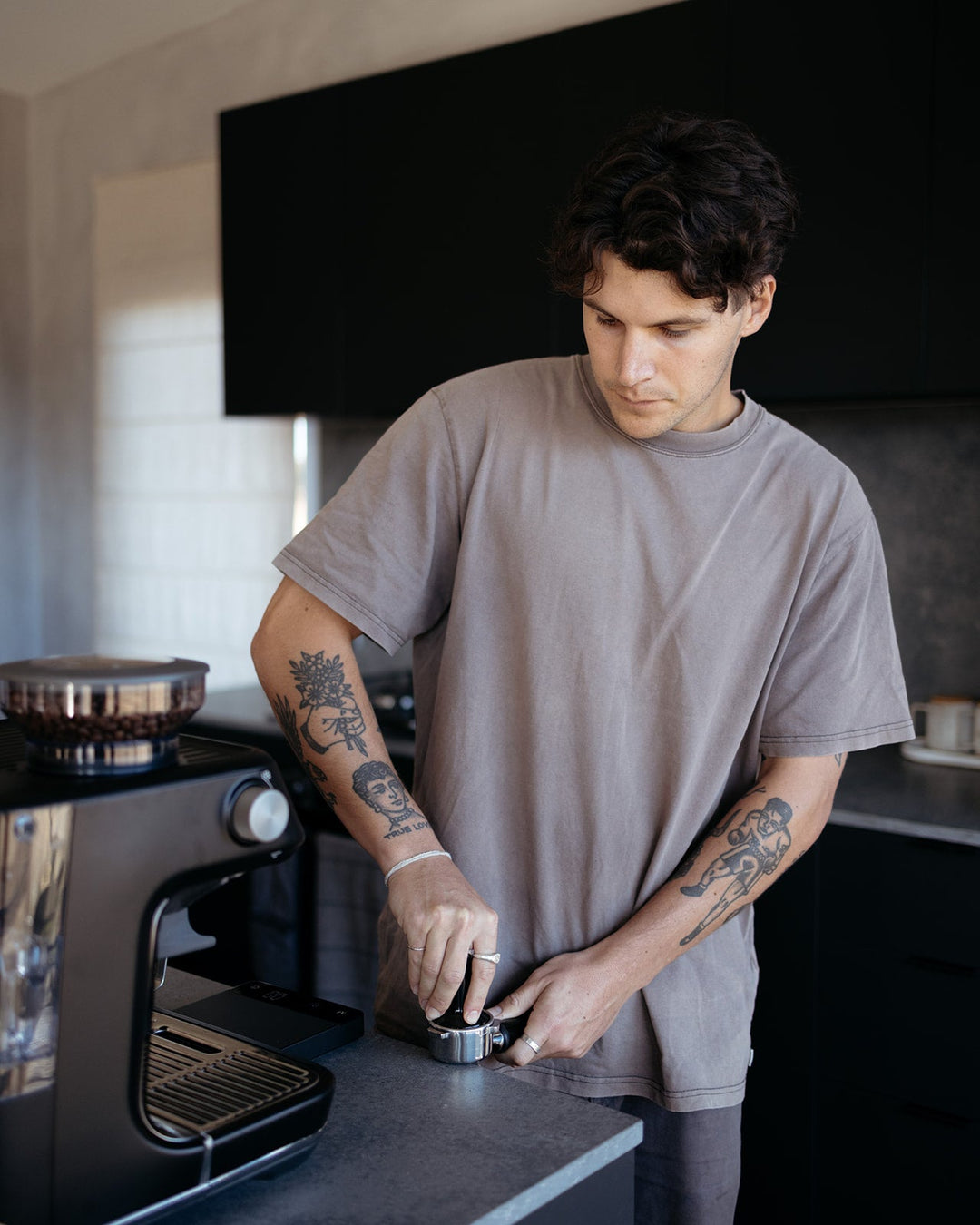The Coffee Lover’s Guide to SOE Single Origin Espresso Selections
Discovering the Abundant Tastes of Coffee Beans: a Deep Study Espresso and Blended Coffee Beans
When you discover the rich tastes of coffee beans, you reveal a complicated world where each selection brings its very own character to your cup. Understanding the beginnings, refining techniques, and roasting methods can transform your coffee experience. As you browse via the art of espresso and the creativity behind combined coffees, you'll start to appreciate the subtleties that make each sip unique. What you'll uncover following might transform the method you enjoy your early morning mixture.
The Origins of Coffee Beans: Checking Out Terroir and Taste Profiles
When you take a sip of coffee, you're not simply delighting in a beverage; you're experiencing a rich tapestry of tastes formed by the beans' origins. Each area generates distinct taste profiles affected by elevation, dirt, and climate. Beans from Ethiopia typically burst with intense, fruity notes, while those from Colombia tend to use a well balanced, nutty sweetness.
As you discover different origins, you'll notice how terroir-- the ecological aspects impacting a plant-- plays an important function - Single Origin Espresso. The same coffee range can taste dramatically various depending on where it's grown
When you think about these variables, you start to value the complexity behind your cup. Each sip narrates of the land and the farmers that supported the beans. Next time you indulge, think regarding the journey your coffee took before it reached your hands, and relish those detailed tastes that reflect its origin.
Comprehending Espresso: The Art and Science Behind the Mixture
When you think of espresso, it's not nearly the solid taste; it's likewise about the techniques that bring it to life. Understanding how various prep work techniques effect taste can change your developing experience. Allow's discover the details of coffee preparation and uncover the one-of-a-kind taste profiles that make each cup special.
Coffee Preparation Techniques
Coffee prep work is both an art and a science, incorporating specific strategies with a deep understanding of coffee. To begin, you'll wish to pick high-quality, fresh roasted beans and grind them finely for excellent extraction (Single Origin Espresso). The grind size is vital; also rugged, and your espresso will certainly be weak, as well fine, and it'll be bitter
The result should be an abundant, luscious espresso with an attractive layer of crema on top. With method, you'll master these strategies.
Flavor Profiles Explained
The world of coffee provides an abundant tapestry of flavor profiles that can elevate your coffee experience. You'll observe an equilibrium of sweet taste, acidity, and anger when you take that very first sip. Each espresso bean brings unique notes, from floral and fruity to nutty and chocolaty. Light roasts frequently showcase intense level of acidity and lively tastes, while dark roasts present much deeper, bolder tones.
Understanding these accounts assists you select the ideal espresso for your palate. Trying out different blends can reveal unusual combinations. As an example, a well-crafted blend could balance the brilliant notes of an Ethiopian bean with the abundant, chocolatey undertones of a Brazilian bean. Embrace the trip of discovering espresso's varied tastes, and you'll change your coffee routine into an exciting journey.
Processing Techniques: Just How They Impact Taste and Scent
While it might seem that the beginning of coffee beans is the most considerable consider establishing their taste and scent, the handling methods utilized post-harvest play an equally vital role. You'll find that these approaches can considerably alter the final preference account of your mug.
For example, the washed procedure removes the fruit from the beans prior to fermentation, typically leading to a cleaner, brighter taste. Meanwhile, the all-natural process leaves the fruit intact during drying out, causing a sweeter, fruitier account.
Various other techniques, like honey processing, strike an equilibrium, permitting some fruit mucilage to stay, offering a distinct complexity.
Each processing strategy interacts with the beans' fundamental qualities, boosting or muting details flavors and aromas. So, when you sip that coffee or blended coffee, bear in mind that the trip from cherry to mug is affected not just by beginning find here yet also by how those beans were refined.
Roasting Techniques: Opening the Complete Prospective of Coffee Beans
Roasting methods are crucial for revealing the complete capacity of coffee beans, as they transform raw, green beans right into the aromatic, flavorful coffee you appreciate. The choice of toasting technique-- light, tool, or dark-- significantly affects flavor accounts.
You can experiment with roasting times and temperatures to find your perfect brew. A slower roast at lower temperatures permits complicated flavors to create, while a quicker roast can magnify anger. Take notice of the cracks during toasting; the initial split indicates a light roast, while the second crack signals a dark roast. By understanding these methods, you'll reveal a world of flavor, raising your coffee experience to new elevations. Delight in every sip, recognizing the treatment that entered into your mug!
The Magic of Blended Coffee: Producing Distinct Taste Experiences
Producing a distinct taste experience with mixed coffee can transform your early morning ritual into an expedition of taste. By combining various beans from various areas, you can reveal a harmony of tastes that raise your cup to brand-new heights. Each blend deals a distinct profile, stabilizing sweetness, level of acidity, and body to develop something really unique.
When you choose a mix, you're not just choosing a coffee; you're picking a journey throughout varied landscapes and societies. Try out various combinations permits you to discover your individual faves, whether you take pleasure in fruity notes or abundant, chocolatey undertones.

Sampling Notes: Identifying the Subtleties in Your Cup
As you sip your coffee, you may see a range of flavors dancing on your taste, each revealing the complexities of the beans. You may taste the intense level of acidity reminiscent of citrus or the deep, rich notes similar to dark delicious chocolate. The sweet taste can evoke honey or caramel, balancing the general account beautifully.
Take note of the body of the coffee-- does it feel light and airy, or is it complete and velvety? The surface, also, offers clues; a remaining aftertaste a fantastic read may hint at nuttiness or floral undertones.

Don't fail to remember to explore the distinct characteristics of different beginnings, as each area gives unique flavors - Single Origin Espresso. Ethiopian coffees typically present fruity notes, while Colombian beans could display a much more rounded sweetness. By identifying these subtleties, you'll strengthen your appreciation for each mug, raising your coffee experience to new elevations

Developing Techniques: Optimizing Flavor Removal for every single Bean
When you check out the different developing techniques, you'll uncover that each strategy can dramatically affect the taste account of your coffee. From French press to pour-over, each technique extracts various compounds, boosting or muting specific notes. For instance, utilizing a French press allows oils to continue to be in the brew, developing a richer taste, while pour-over emphasizes quality and brightness.
Temperature level and grind size additionally play necessary duties. A coarser grind functions best for cold mixtures, while a great grind is ideal for coffee. Experimenting with water temperature level-- between 195 ° F and 205 ° F-- can reveal concealed tastes, too.
Do not ignore soaking time; a hop over to these guys quick removal can result in sour notes, while over-extraction might generate resentment. By readjusting these variables, you can make the most of flavor removal and really raise your coffee experience. Enjoy the journey of uncovering what approach ideal matches your palate!
Often Asked Inquiries
What Is the Ideal Water Temperature for Brewing Coffee?
The excellent water temperature level for brewing coffee's between 195 ° F and 205 ° F. If you utilize water that's too warm, you'll over-extract tastes; also cold, and you won't draw out sufficient. Go for that sweet area for the ideal mixture!
How Does Grind Size Affect Coffee Flavor?
Grind dimension considerably affects coffee flavor. Finer grinds essence more oils and flavors, causing a bolder preference, while coarser grinds return a lighter taste. Readjusting work dimension aids you attain your desired coffee profile.
Exist Health And Wellness Perks Surrounding Alcohol Consumption Coffee?

What Is the Distinction In Between Arabica and Robusta Beans?
Arabica beans are smoother and sweeter, usually including fruity flavors, while robusta beans are more powerful with a bitter preference and higher caffeine content. You'll see these distinctions in fragrance and brewing experience.
How Can I Shop Coffee Beans for Quality?
To keep coffee beans for freshness, maintain them in an impermeable container, away from moisture, warmth, and light. If you only grind what you require right before developing., you'll preserve their flavor much longer.
Checking Out the Rich Tastes of Coffee Beans: a Deep Dive Into Espresso and Blended Coffee Beans.
When you explore the rich flavors of coffee beans, you reveal a complicated globe where each range brings its very own personality to your cup.When you take a sip of coffee, you're not simply taking pleasure in a drink; you're experiencing an abundant tapestry of flavors shaped by the beans' beginnings.Roasting methods are necessary for exposing the complete capacity of coffee beans, as they change raw, eco-friendly beans into the fragrant, tasty coffee you enjoy.As you drink your coffee, you may discover a range of flavors dancing on your taste, each exposing the details of the beans.